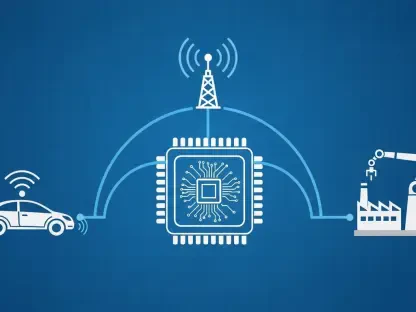In an era where seamless connectivity is no longer a luxury but a necessity, enterprises across the United States face a daunting challenge as mobile network operators (MNOs) step back from managing in-building cellular systems, leaving building owners and businesses to navigate this complex landscape. This shift, driven by evolving business priorities and technological demands, underscores the urgency to maintain reliable coverage inside offices, campuses, and commercial spaces, especially with the rise of mobile workforces and the critical need for emergency communication. As MNOs redirect their focus to high-profile venues like stadiums and airports, enterprises are left grappling with aging systems and the pressing need to upgrade to modern solutions like 5G. This transition marks a pivotal moment for the industry, raising questions about readiness, expertise, and the future of indoor connectivity in a rapidly changing landscape.
Shifting Responsibilities in Indoor Wireless
The Retreat of Mobile Network Operators
The landscape of in-building cellular systems has undergone a significant transformation as MNOs have increasingly withdrawn from providing and maintaining these networks over recent years. Historically, operators saw large enterprise spaces as opportunities to offload traffic from outdoor public networks, often installing distributed antenna systems (DAS) at no cost to property owners in exchange for space and power. This mutually beneficial arrangement thrived for decades as cell phone usage skyrocketed. However, the focus of MNOs has shifted to more visible, public-facing venues, leaving countless enterprise buildings with outdated infrastructure and no carrier support. This retreat has created a void, forcing building owners to take on responsibilities they are often ill-equipped to handle, especially when it comes to understanding the technical intricacies of cellular systems and the financial implications of upgrades.
Economic and Cultural Drivers of Change
Several underlying factors have contributed to the decision by MNOs to step away from enterprise indoor systems, reshaping the dynamics of connectivity. The bring-your-own-device (BYOD) trend, where employees use personal devices for work, has diminished the direct revenue operators once gained from enterprise contracts. Coupled with the massive investments required for 5G spectrum and deployment, carriers face financial pressures that make funding in-building systems less viable. Additionally, the shift to remote work during the global health crisis reduced the immediate need for robust indoor coverage, further influencing operator priorities. These economic and cultural shifts have left enterprises in a precarious position, needing to address coverage gaps independently while balancing budgets and operational demands. The challenge lies in adapting to a new reality where self-managed solutions are no longer optional but essential for maintaining business continuity.
Navigating the Path to Modern Indoor Solutions
Technical Complexities of Upgrading Systems
Upgrading or replacing indoor wireless infrastructure presents a formidable task for enterprises, largely due to the absence of a universal approach to deployment. Each building demands a customized solution tailored to its unique architecture, existing coverage, and anticipated future needs. Technologies such as small-cell systems or neutral-host networks offer alternatives to traditional DAS, but selecting the right option requires deep technical knowledge that many building owners lack. The process of planning and implementation can span 12 to 16 months, adding to the complexity and urgency of the situation. Enterprises must also navigate a diverse ecosystem of vendors and integrators to ensure compatibility with modern standards like 5G. This intricate journey underscores the need for strategic planning and expert guidance to avoid costly missteps in creating reliable indoor networks.
Safety and Productivity as Key Motivators
Beyond the technical hurdles, the fundamental importance of reliable indoor cellular coverage cannot be overstated, particularly when it comes to safety and operational efficiency. The ability to make emergency calls from challenging environments like underground parking areas or elevators is a basic expectation in today’s connected world. Moreover, seamless connectivity supports productivity by enabling a mobile workforce to stay engaged regardless of location within a building. For enterprises, failing to address these needs risks not only operational disruptions but also potential safety hazards. The urgency to act is clear, as outdated systems can no longer meet modern demands. Building owners must prioritize investments in upgraded infrastructure, recognizing that the cost of inaction could far outweigh the initial financial burden of adopting new technologies.
Strategic Steps for Future-Ready Connectivity
Reflecting on the challenges faced, enterprises have had to acknowledge the critical gap left by MNOs and take decisive steps to adapt to this new reality. Building owners began assessing their current indoor coverage, identifying weaknesses, and charting a path toward modernization. Collaborations with technology providers and integrators emerged as a practical solution to bridge the expertise gap, ensuring that systems were not only upgraded but also future-proofed for upcoming innovations. The focus shifted to balancing immediate needs with long-term goals, such as integrating 5G capabilities and supporting evolving workplace trends. By taking ownership of their wireless infrastructure, enterprises laid the groundwork for sustained connectivity, proving that proactive measures could turn a daunting challenge into an opportunity for enhanced safety and efficiency.









